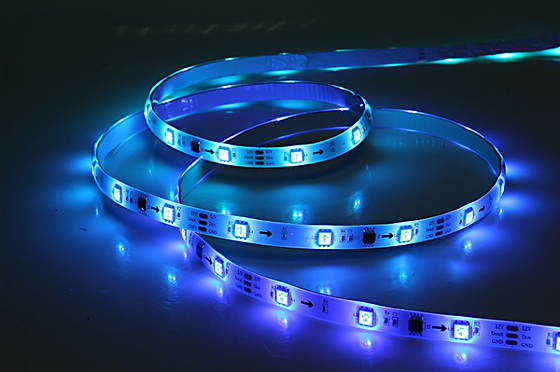Application of LED PCBs in Plant Growth Lights
With the advancement of smart agriculture, plant growth lights have gradually become essential equipment in greenhouses and plant factories. As the key carrier of the light source, the performance of LED PCBs directly determines the lighting efficiency, operational stability, and overall growth performance of plants, thus playing a vital role in the field of agricultural lighting.

1. Efficient Heat Dissipation and Stable Spectrum Output
During operation, LED chips continuously generate a large amount of heat. If the heat is not dissipated in time, thermal accumulation can lead not only to reduced luminous efficiency and shortened lifespan of the LEDs, but also to shifts in spectral wavelength. Plant photosynthesis is highly sensitive to specific wavelengths of light, such as red light (620–660 nm) and blue light (450–470 nm), and even slight wavelength deviations can directly affect photosynthetic efficiency and plant growth rate.
Currently, most LED PCBs use either aluminum-based PCBs or ceramic-based PCBs. The aluminum-based PCB rapidly conducts heat through its metallic base layer, providing a heat dissipation efficiency 3–5 times higher than that of traditional FR-4 PCBs. Ceramic-based PCBs, such as alumina (Al2O3) and aluminum nitride (AlN), combine high thermal conductivity with excellent insulation properties, allowing them to withstand the long-term operation requirements of high-power growth lights (above 100W).
In practical applications, such as in greenhouse lettuce cultivation, plant growth lights using aluminum-based LED PCBs can maintain the lamp temperature below 50 ℃, extending the LED lifespan to over 50,000 hours. Under the same light intensity, the growth cycle of lettuce is shortened by about 20% compared to traditional fluorescent lamps, significantly improving agricultural productivity.
2. Precise Layout Design for High Uniformity Plant Lighting Systems
In plant lighting systems, the precise layout design of LED PCBs is a key factor in achieving adaptable and uniform illumination. Different types of plants have varying requirements for light uniformity and intensity: leafy vegetables require evenly distributed light to prevent localized overgrowth, while fruit-bearing crops rely more on higher light intensity to promote fruit setting and sugar accumulation.
With the help of SMT (Surface Mount Technology), LED PCBs enable high-density and well-organized chip arrangement. For example, in multi-layer planting racks used in vertical farms, LED growth lights utilizing narrow-frame PCB designs can precisely control the lighting angle within 120°–150°, ensuring a light uniformity of over 90% for each planting layer. Moreover, LED PCBs can flexibly customize the spectral composition based on plant types. When cultivating succulents, a red-to-blue light ratio of 3:1 promotes fuller leaf development; during the seedling stage, the ratio can be adjusted to 2:1 to accelerate root growth and enhance early-stage seeding vigor.
3. Lightweight and Customizable Design for Flexible Smart Agriculture Layouts
The lightweight and customizable characteristics of LED PCBs enable plant growth lights to adapt to a wide range of cultivation scenarios. Traditional plant growth lights often rely on metal housings for support, which makes them bulky and inconvenient to install. In contrast, LED PCBs not only serve as circuit carriers but also as structural components, and can be designed as flexible PCBs or ultra-thin rigid PCBs based on application needs. Flexible PCBs can bend and conform to curved planting racks, making them ideal for compact environments such as home balconies and vertical gardens. Ultra-thin rigid PCBs effectively reduce lamp size, saving up to 30% of installation space in plant factories and allowing for more efficient layouts.
At the same time, LED PCBs support intelligent and customized system designs. In smart plant lighting systems, the PCB can integrate driver circuits and sensor interfaces, such as reserved ports for temperature and humidity sensors. This enables real-time environmental monitoring and automatic LED brightness adjustment, forming an integrated “light–temperature–humidity” control system that significantly improves plant yield and energy efficiency.
Amid the global trends of green agriculture and low-carbon development, LED PCBs are driving the energy-efficient evolution of plant growth lights. Compared with traditional sodium lamps, LED growth lights built with PCB integration technology reduce energy consumption by more than 50% and contain no hazardous materials such as mercury, meeting environmental protection standards. Looking ahead, with the adoption of new materials like graphene-based thermal substrates, LED growth lights will continue to achieve higher efficiency and lower power consumption, providing strong technological support for the large-scale development of smart agriculture.
HoYoGo is an international, professional and reliable LED PCB manufacturer. With strong in-house production capabilities, we provide one-stop services covering small, medium, and large-volume manufacturing. Whether you need HDI PCBs, gold finger PCBs, hard gold PCBs, flexible PCBs, rigid-flex PCBs, metal-based PCBs, quick-turn prototypes, or PCBA services, HoYoGo can fully meet your requirements.
评论
发表评论